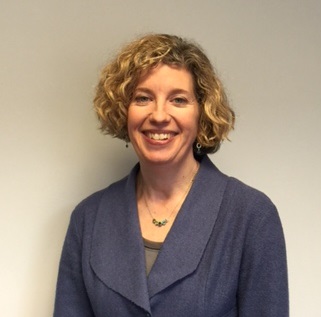Event August 24, 2016 - 8:00am
The Executive Committee meets every two months in the interim between full board meetings. For more information please contact Q Corp Executive Assistant Juli Jones at Juli.Jones@q-corp.org.
The Executive Committee meets every two months in the interim between full board meetings. For more information please contact Q Corp Executive Assistant Juli Jones at Juli.Jones@q-corp.org.
The Board of Directors is comprised of representatives from state agencies, hospitals, health plans, and consumer, employer and provider groups. They provides vision and oversight of projects, advocates for the organization among community stakeholders, approves the budget and assures sound financial policies and processes and addresses barriers to the organization’s mission and vision.
The Executive Committee meets every two months in the interim between full board meetings. For more information please contact Q Corp Executive Assistant Juli Jones at Juli.Jones@q-corp.org.
The Board of Directors is comprised of representatives from state agencies, hospitals, health plans, and consumer, employer and provider groups. They provides vision and oversight of projects, advocates for the organization among community stakeholders, approves the budget and assures sound financial policies and processes and addresses barriers to the organization’s mission and vision. The Board of Directors meets every other month from 8:00 am - 10:00 am.
The Executive Committee meets every two months in the interim between full board meetings. For more information please contact Q Corp Executive Assistant Juli Jones at Juli.Jones@q-corp.org.
 Jennifer Hendrickson joined the Q Corp team in March 2016 is a Program Director with the Patient-Centered Primary Care Institute. She brings a passion for strategy, innovation, public health, and change management to her role focusing on the Extension Program.
Jennifer Hendrickson joined the Q Corp team in March 2016 is a Program Director with the Patient-Centered Primary Care Institute. She brings a passion for strategy, innovation, public health, and change management to her role focusing on the Extension Program.
"Aligning Health Measurement in Oregon" is a result of two years of research by CHITO to study and develop recommendations around a proliferation of overlapping - and sometimes competing - state, federal, and commercial health care quality reporting initiatives and mandates.
"Aligning Health Measurement in Oregon" is a result of two years of research by CHITO to study and develop recommendations around a proliferation of overlapping - and sometimes competing - state, federal, and commercial health care quality reporting initiatives and mandates.
"Aligning Health Measurement in Oregon" is a result of two years of research by CHITO to study and develop recommendations around a proliferation of overlapping - and sometimes competing - state, federal, and commercial health care quality reporting initiatives and mandates.
Oregonians’ health will be improved if there is a public-private effort to overhaul the number and types of health care quality measures currently being collected, according to a white paper issued today by the Collaborative for Health Information Technology in Oregon (CHITO).
Join Harold Miller and a collection of expert panelists for an innovative forum that will explore the potential cost impacts to employers, physicians and other stakeholders by changing our healthcare payment system.
On Friday, June 17, thanks to support from the Robert Wood Johnson Foundation, the Network for Regional Healthcare Improvement (NRHI) and the Center for Healthcare Quality and Payment Reform (CHQPR) will host 100 senior healthcare leaders from all over the country to tackle eight important issues related to payment reform.
Q Corp is pleased to announce the release of its second round of Clinic Comparison Reports. Earlier this month, reports were sent to 176 primary care clinics across the state.
Washington, D.C., June 17, 2016 – On June 17, Q Corp joined the Network for Regional Healthcare Improvement (NRHI), the Center for Healthcare Quality and Payment Reform (CHQPR) and 100 senior healthcare leaders from across the country to discuss eight barriers to successful health care payment reform.
During this presentation, leaders from Oregon Health Care Quality Corporation, Meredith Roberts Tomasi and Doug Rupp, and guest speaker Micheal Whitbeck from Northwest Primary Care, will share the story of their state’s TCOC reporting program
You've submitted your 2015 data to CMS under requirements for PQRS and/or MU and/or another program. Your feelings are:
"By 2035, current primary care production rates will be unable to meet demand, resulting in a shortages in excess of 33,000 primary care physicians" (Petterson, et al., 2015). However, high-functioning teams that utilize registered nurses (RNs) to manage some conditions can help narrow this gap. Join us on August 16 for a sample of Nurse Visit types - vetted through the Nursing Innovation Collaborative - to bring back to your practice.
Over the past several years, HealthInsight Management Corporation, HealthInsight Oregon (formerly Acumentra Health) and Q Corp have been partners in a variety of health care quality improvement activities nationally and in Oregon, including the Medicare Quality Improvement Organization Program and other QI activities.
The concept of medical home was first introduced in 1967 by the American Academy of Pediatrics (AAP) as a model specifically designed for children and youth with special healthcare needs (CYSHCN).
Given the need to control health care spending and to address social factors that impact the lifelong health of children and costs, there is a need to identify WHICH children would most benefit from complex care management. Secondly, there is a need to identify WHAT team will best meet the needs of child and family.
Join us for part one of this two-part webinar series that reviews the nuts and bolts of screening and treatment of depression in primary care.
Join us for part two of this two-part webinar series that reviews the nuts and bolts of screening and treatment of depression in primary care. This section will review workflow and clinical engagement.